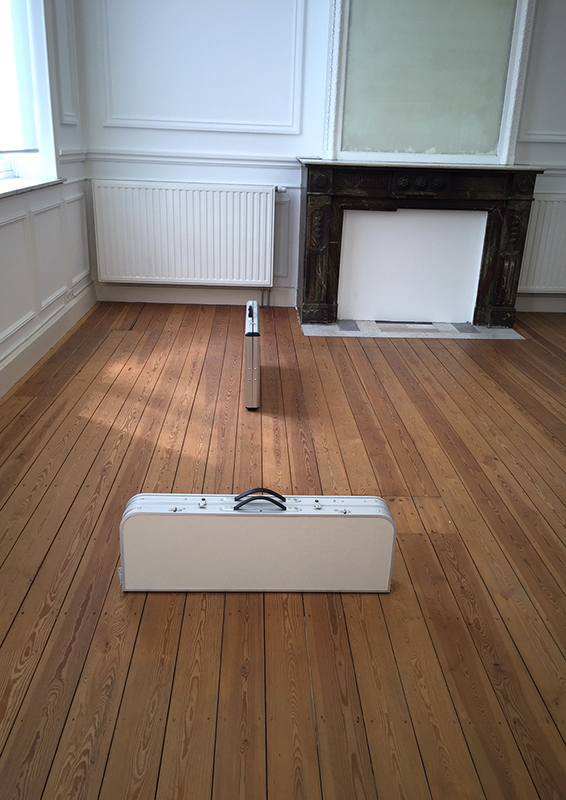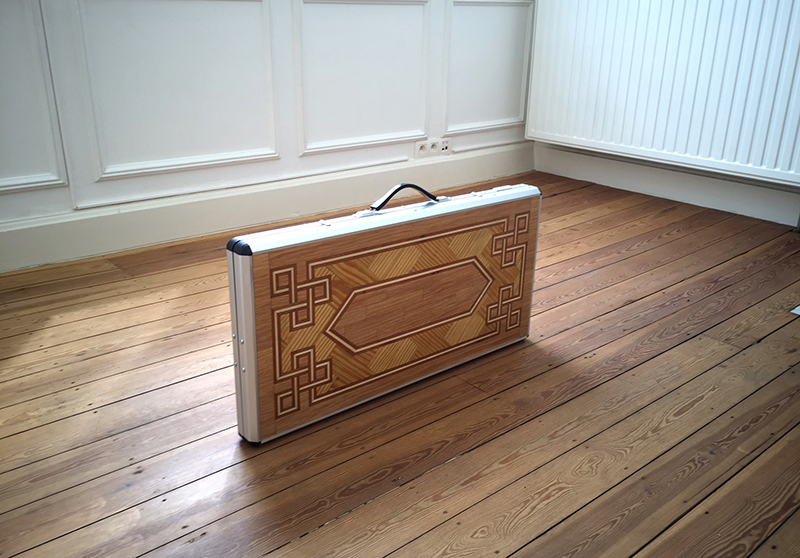Indoor Outposts
Galerie Micheline Szwajcer, Brussels
June 2016




The term “outpost” implies forward motion in terms of territory (space), but backward motion in terms of readily available agriculture, shelter, plumbing, commerce, a legal system, etc. However rudimentary, like a campsite, or sophisticated, like a Mars rover, an outpost is always pulled in two spatial directions at once. This tension creates the drama that gives the outpost its romantic appeal, a tension made all the more acute when the space and time that is being traveled is on our desktops or in our heads. This show aimed to unpack that tension, and all the ways that that truth and memory and progress continue to fail us.
The Indoor Outposts are standard portable camping equipment adapted for domestic use. In addition to being retooled with a wide range of materials (brass, leather, aluminum, plastic, wood, stainless steel, fabric), each indoor outpost also contains a particular outmoded form of technology: a slide projector, a typewriter, a magic lantern, the Atomium depicted in exotic wood inlay. When unpacked, the indoor outposts create artificial scenarios of the future via the past.
Solitary confinement, “roughing it,” and imaginary time-space travel are all common themes in literature. The Indoor Outposts were influenced by Against Nature, the nineteenth century novel by Joris-Karl Huysmans in which the protagonist outfits the rooms of his capacious mansion with various tableaux of the world so that he will never again need to go outside. Another is Blaise Pascal musing that all the world’s problems stem from our inability to sit quietly in our rooms. Perhaps that problem has been solved. No less fantastic are the remote grounds described in Raymond Roussel’s Locus Solus, on which, among many other incredible inventions, there are refrigerated glass chambers whose inhabitants perpetually reenact their deaths in an exacting restaging of the settings in which they occurred thanks to a certain special chemical that is injected into the base of their necks.
The Indoor Outposts also relate to my research into the late work of Marcel Broodthaers, and how the concepts of conquest and technology and apathy haunt his Jardin d’Hiver, his Atlas, and his final exhibition and catalogue at the Centre Pompidou. These works presaged many of the current moral and political contradictions of digital space. Do the Indoor Outposts rouse similar ghosts?